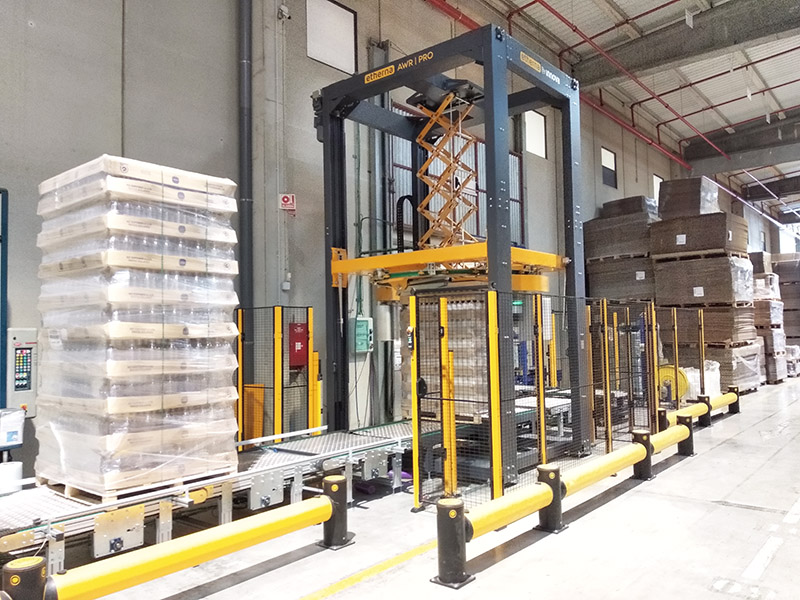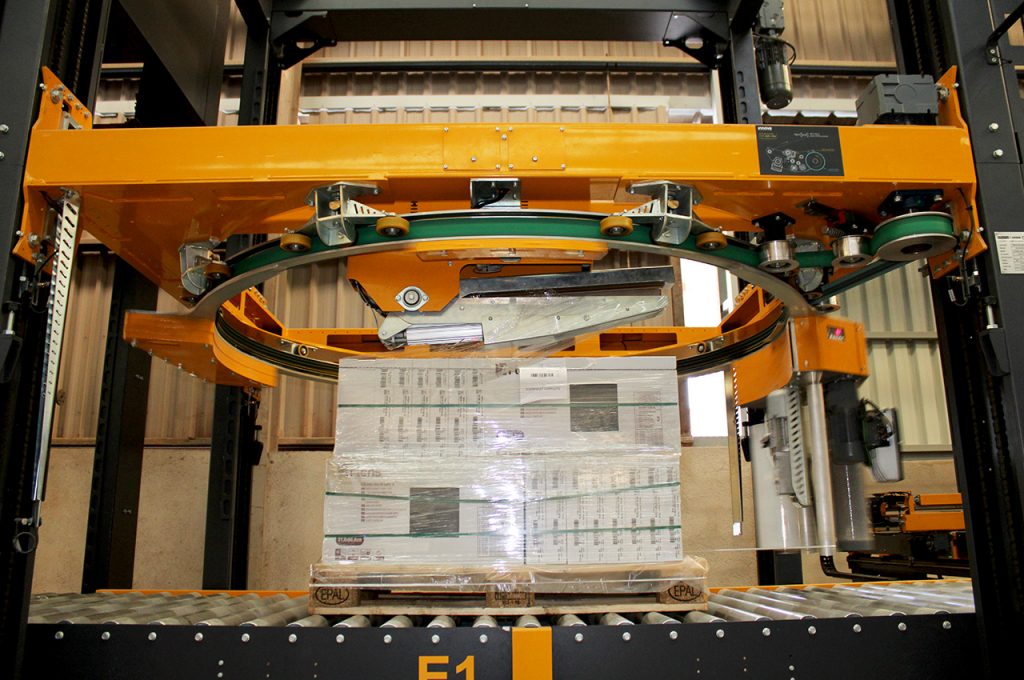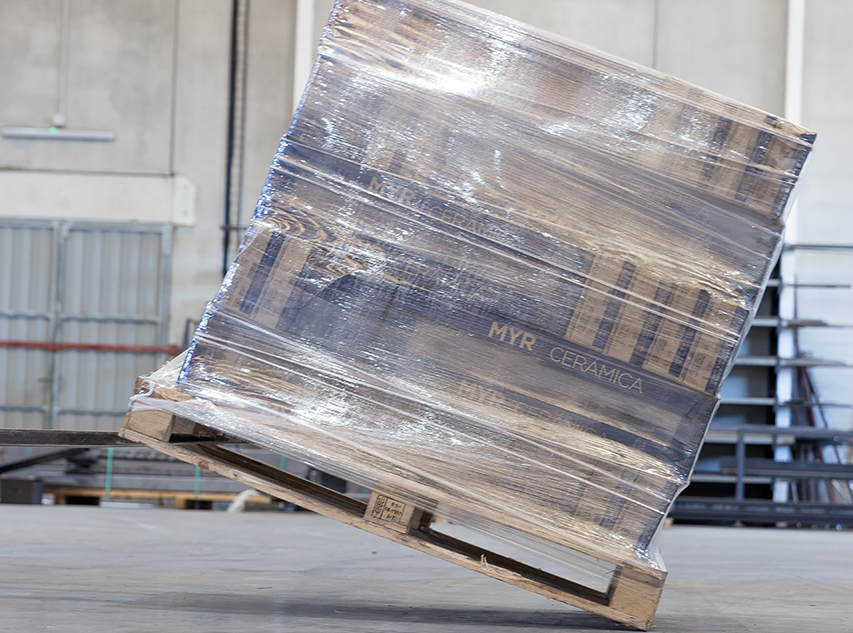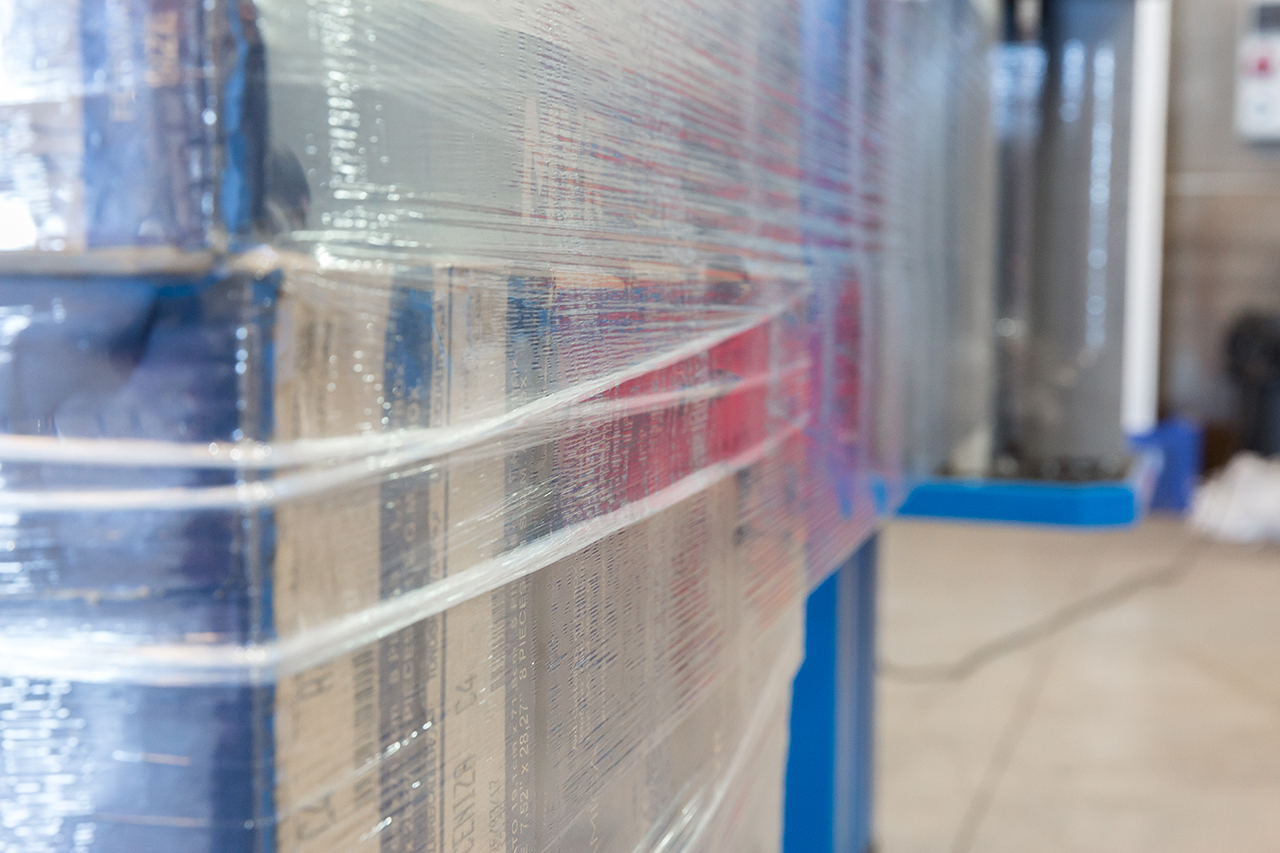How to use Stretch film correctly on the Stretch Wrapping system?
Am I using the film correctly on my Stretch Wrapping machine? How can I detect that the film is being applied with the perfect force or tension for my product? Is my load secure with the industrial Stretch Wrapping we do? Whether with semi-automatic or automatic pallet wrappers, it is important to know how to correctly apply the film on the load to be secured.
As we have discussed on several occasions, the pallet wrapping system is one of the most versatile on the market, since it can be adapted to many types and formats of loads. It also allows a level of customization even in automatic stretch wrappers that need the hand of an expert to ensure optimal industrial packaging. In today’s article we review some of the aspects to take into account to use Stretch film correctly and get the most out of it.
Tell me what product you have and I will tell you what kind of packaging you need
Before getting into the subject, it is very important to know the characteristics and logistical weaknesses of our type of cargo. Although it may seem that we know everything about our product, there are a series of elements that must be taken into account to determine the type of baling:
- Product weight and stability: do I have loads of disparate weights?
- Uniformity of the load: How often are irregular loads wrapped?
- Load composition: Are there slippery products or load shifting cases?
- Purpose of packaging: Are we packing for storage or for transporting thousands of miles?
- Damage check: How many product losses, accidents or damages during transport?
Some examples of load revision:
If the load is heavy, for example, ceramic boxes: It is necessary a stretch wrapping with high-performance stretch film that reinforces the base to the pallet and also offers containment at different heights of the load with a cord system to provide greater support.
If the load is light and not very stable: It is important to use stretch wrapping with different tension at different heights. In addition to reinforcing the base of the pallet, stretch wrapping should be carried out with vertical containment. In automatic productions, it is advisable to use a stretch wrapper with a top press to hold the load during wrapping.
If we are having damage due to internal displacement of the load: we will need a much more compact wrapping and even the application of fastening systems such as the reinforcement cord.

Keys to optimize stretch film on industrial packaging machines
Let’s take a look at the most important aspects to use stretch film properly.
Type of film: Stretch film or pre-stretched film?
One of the crucial aspects to take advantage of the film is to use it correctly according to the type of film: it is not the same a film that is already pre-stretched, and is usually presented with a lower micron, than a Stretch film of superior quality that can allow a stretch up to 400%, while retaining micron.
Differences between pre-stretched film and stretch film according to type of load:
- Pre-stretch film: with low thicknesses (around 10-15 microns) it is ideal for light loads and non-uniform shapes. This type of film is usually inexpensive and can perfectly fulfill its function of holding and containing the load for handling and transporting it not too far away.
- Hybrid films: With low thicknesses there are pre-stretched films with minimum stretch capacity, perfect for light or medium weight loads.
- Stretch film: This is the most commonly used film in semi-automatic and automatic pallet stretch wrappers, and depending on the type of load, film with different micronages and stretch capacity from 100% to 400% may be necessary in stretch wrapping machine models with this capacity.
Wrapping tension and its containment force
In the following section, we delve into a more technical aspect, such as the containment force of industrial wrapping. Whether in semi-automatic pallet wrappers or automatic ones, it is important to understand the containment of wrapping, which depends on the force or tension applied.
How to calculate wrapping containment force?
There is a standard from the American ASTM association that recommends the containment force to be 1% of the load’s weight. However, this rule may result in using more film than necessary and may not always be a standard.
In reality, both for applying the necessary tension and for calculating its containment force, several parameters must be considered, such as:
- Pallet weight
- Pallet height
- Pallet structure
- Pallet transportation
- Type or composition of the load
According to standard market calculations, we provide some examples:
- For very light loads: the tension could vary between 1-2 kg of force as no more is needed.
- For medium and stable loads: the tension can be slightly higher, between 2-5 kg of force.
- For heavy and unstable loads: a tension of more than 6 kg of force should be applied, or even reach 10 kg or more.
Important: This tension should not be applied uniformly across the entire load, especially in the case of unstable or heavy loads, but should vary slightly depending on the area to be wrapped: for example, higher tension on the bottom wraps, and reinforcement on the top to prevent detachment.

Securing the load to the pallet base
Another key point for a good pallet wrapping system, regardless of the type, is to always ensure a strong attachment of the load to the base. This means that the wrapping cycle should effectively join the bottom area of the load, fixing it to the pallet. In automatic pallet wrappers, we also recommend using reinforcement cord at this crucial point for stability during transportation of the load.
One of the primary objectives of industrial packaging is always to secure the merchandise. Therefore, this point is even more important than the exact force applied during wrapping.

Wrapping Finish
Finally, a point that often takes a back seat is the wrapping finish itself, which doesn’t have to be just aesthetic. Here, it is essential not to leave “loose ends” literally, so the following should be monitored:
- Trailing film tails (which can catch and thus undo the wrapping)
- Bags between layers caused by low wrapping tension or improper film usage
- Any potential film tears or film resin residues between layers that could cause the wrapping to be damaged.
- Upper protective cover applied correctly
Final Recommendations
After reviewing the most suitable film type for our load, tension, containment force, and wrapping securing finishes, it’s important to consider three standard recommendations.
In any wrapping process, you’ll know that wrapping has been done correctly when:
- The film is applied with tension and firmness but without crushing or damaging the load.
- The merchandise is securely attached to the pallet base.
- There is tension in all areas of the load, without leaving an area with significantly fewer wraps or much less tension than the rest.
Remember that the litmus test for the pallet wrapper is during transportation and delivery to the customer. Good industrial wrapping prevents not only losses but also leaves customers satisfied.
At Innova Group, we provide technical assistance on wrapping and pallet covering systems. Our Engineering team programs each wrapper (whether semi-automatic or high-performance automatic) for the characteristics of each load and the objectives of product securing and protection. Additionally, we have a testing area in our Innova Lab where simulations of load transportation can be conducted to ensure the firmness and stability of the packaging.
Feel free to contact us for more information or to optimize the ideal packaging system for your product.







